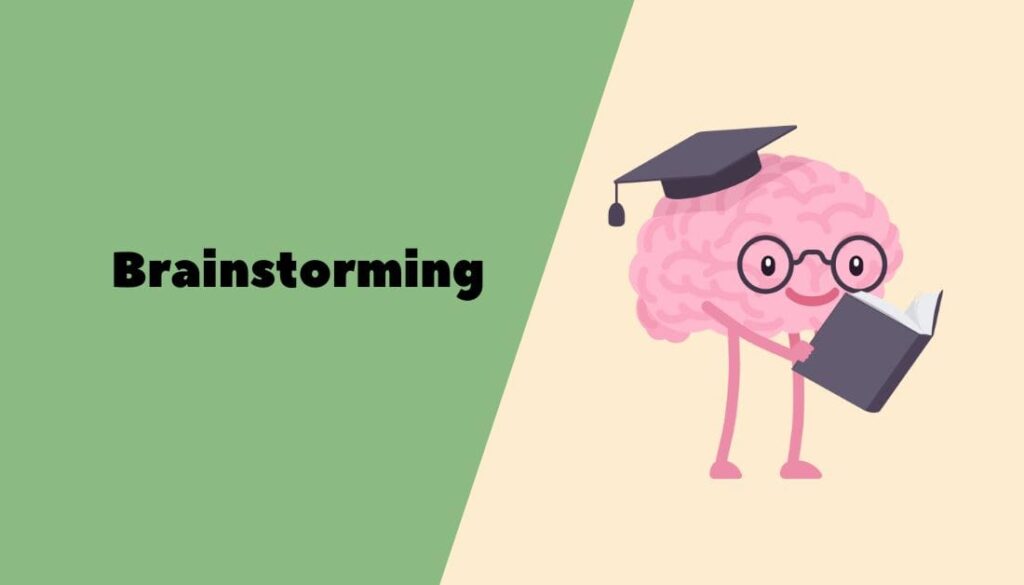How to Generate Ideas for IELTS Writing: Generating ideas in the IELTS writing module is the most difficult task for many IELTS aspirants. Students get only one hour to complete two writing tasks. But having no ideas to write on makes them more anxious or worried. This lesson will teach you to generate ideas for IELTS Writing Task Two.
How to Generate Ideas for IELTS Writing

- Identify the IELTS writing question type
- Question analysis
- Quick brainstorming to write an effective essay
- Structure information into paragraphs
1. Identify the Question Type

There are different types of questions in the IELTS writing task 2. The most important thing is to identify what question type you’re dealing with so that you can use the correct structure or expressions for that. In Task 2, we have five different question types. Such as:
- opinion question
- agree or disagree question
- discuss both views
- discuss both views and give your opinion
- advantages or disadvantages question
- advantages outweigh disadvantages
- problems and solutions question
- causes and solutions question.
- double questions
Now that you have all this information, let’s see what steps we need to take before we start to write the writing.
2. Question Analysis

The first thing you should do is question analysis. Let’s see an example. Here we have a Task 2 question. The question statement says:
Students perform better in school when they are rewarded rather than punished.
We’re also asked two questions related to the given question statement.
- The first one says, “To what extent do you agree or disagree?”
- The second one says, “Discuss both views and give your own opinion.”
You see, with this question, the first thing that you should do is to read it very carefully to fully understand what you’re asked to write about and also what type of question you’re dealing with.
To do so, what you need to do is to underline the keywords. For example, we have the IELTS writing task 2 prompt:
- Students perform better in school when they are rewarded rather than punished. To what extent do you agree or disagree?
Here, the keywords are “students perform,” “reward,” and “punished” in the question statement. [How to Generate Ideas for IELTS Writing]
Students Also Read: 3 Sentences for IELTS Writing Task 2 Introduction
3. Brainstorming

The next step that you need to take is brainstorming. But what is brainstorming? Simply put, brainstorming is to come up with some ideas that you want to write about.
Now, to understand it better, let’s suppose that we are not on the exam day struggling with different question types to write a writing about. Instead, we are sitting in a coffee shop next to our friend, talking about this and that. Suddenly, a sentence in a newspaper next to us attracts our attention.
The sentence says, “Students perform better in school when they are rewarded rather than punished.” After reading the sentence, you start talking about it with your friend.
- Your friend agrees with the sentence and says: that this kind of punishment among the students can improve their progress.
- You think: But on the other hand, you find yourself against the idea, and you think that this punishment can have negative impacts on the students and, of course, on their future. So, this is not a good idea.
You have started to think about different ideas, analyzing the two sides of this statement. This is exactly what you have to do on exam day. What I mean is that you don’t need to complicate things for yourself. Just think about some very simple ideas and then develop them throughout your whole writing.
What you need to do is to just come up with some ideas, even if you don’t personally agree with them. As long as they are relevant to the question statement, you’re good to go. Take two to three minutes to brainstorm and plan your essay before you write it. What I mean is that whatever you think about, try to write it on paper, and then start your writing, or you will forget it when you’re writing the paragraphs.
Brainstorming will help you with:
- time management
- reducing stress levels
- identifying the required writing structure
4. Paragraph Structure

Now that we know how to analyze the question, circle the keywords, and brainstorm, it’s time to learn the paragraph structure in IELTS Writing Task 2.
- Introduction Paragraph: The first paragraph we have is the introduction paragraph, which includes between two to three sentences.
- Body Paragraph One: Then we have body paragraph one, which has three to five sentences.
- Body Paragraph Two: Then in body paragraph two, we have again three to five sentences.
- Conclusion: Finally, in the conclusion paragraph, you will have two to three sentences.
Try to follow the correct paragraph structure to get a good score.
Students Also Read: How to Practice for IELTS Exam: 7 Days, 1 Month, 3 Months
Conclusion
In this lesson, [How to Generate Ideas for IELTS Writing] you have learned about the different question types in IELTS Writing Task 2, how to generate ideas using brainstorming, how to structure information in the body paragraphs also the steps you need to take even before you start your writing.
Students Also Read:
How to Pass IELTS Exam in First Attempt: Top 10 Tips
5 Common Grammar Mistakes in IELTS Writing and Speaking
Best Way to Improve IELTS Speaking Score